What Hi-Fi? Verdict
Well worth considering if the features appeal, but the PD-50 doesn’t engage as it should
Pros
- +
Clean and rhythmically organised sound
- +
Array of digital inputs
- +
Serious build and styling
Cons
- -
Dynamically lacking
- -
Sound is a touch lightweight
Why you can trust What Hi-Fi?
SACD is the zombie of music formats: never truly alive but never quite dead. There are enough enthusiasts out there to ensure the odd disc emerges every so often, but the move to downloads and streaming means it will never truly become mainstream.
So when a new SACD player turns up it’s actually everything else it does that’s most interesting, and thankfully the Pioneer PD-50 does quite a lot.
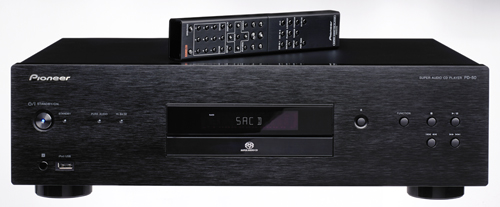
Pioneer PD-50: specifications
Naturally, it plays CDs, but it’s also got twin 32-bit/192kHz DACs that convert the digital audio it receives via its coaxial, optical and USB inputs. The latter can handle MP3s, WMAs and AACs stored on USB stick, or whatever’s stored on your iOS device (which gets charged while it’s connected).
The whole caboodle is wrapped in a chassis that’s built with a seriousness to match its looks. The large angular casework has a “rigid under base” to eliminate external vibrations; an aluminium front panel for increased rigidity; a “separate shield structure” that “completely isolates the audio block from the digital/servo power block”; and an “acoustic damper tray” to make sure the spinning disc doesn’t introduce mechanical noise or external vibrations.
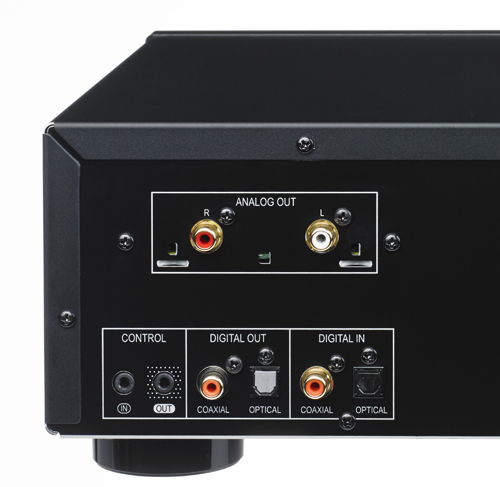
Pioneer PD-50: sound
It all sounds very impressive on paper. But how does the Pioneer sound in real life? Start with Lana Del Ray’s Born To Die on CD and it’s instantly clear that it’s good, but not perfect. The electronic beat proves that the PD-50 has a strong sense of pace and timing.
Notes start and stop with precision, which makes everything easy to follow, and there’s enough detail to make the most of the sultry vocals that saw Del Ray become instantly arresting.
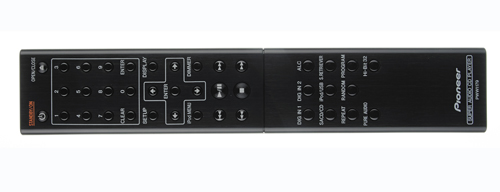
And yet the track isn’t as engaging as it should be. This is partly because the overall tonal balance is just on the thin side of neutral, which takes away some authority, but more than that it’s a relative lack of dynamic finesse.
The lack of low-level subtleties means the quiet sections are less emotive than they should be, and there isn’t enough impact when the chorus kicks in.
Switching to SACD gives a clear step-up in detail, as it usually does. In many ways we find it a disappointment that this format didn’t take off in a proper mass market way. It really can make conventional CDs sound a little clunky, and well… crude.
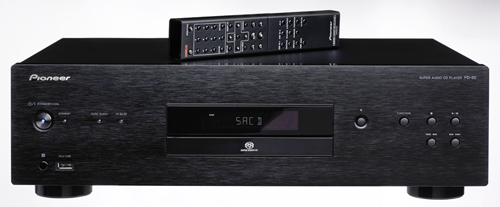
Take a listen to Eric Bibb’s Where The Green Grass Grows and the Pioneer delivers plenty of insight. There’s an impressive sense of precision here, and the kind of fluid rhythmic ability that’s very hard to get from CD. Yet, despite all the good things on show the PD-50 still doesn’t grab our attention with the force we’d like.
It sounds just a touch detached, the same lack of expressiveness we noticed with CD is also apparent here.
Pure Audio mode switches off the display and digital circuitry, and tightens audio from all sources. Good stuff. But we’d be surprised if anyone found the Sound Retriever mode of benefit.
Intended to “improve the sound quality of compressed audio to the level of CD sound”, we found that even in our very high-end reference system the difference was so miniscule as to be pointless. MP3s sound fine through the Pioneer, but never CD-quality.
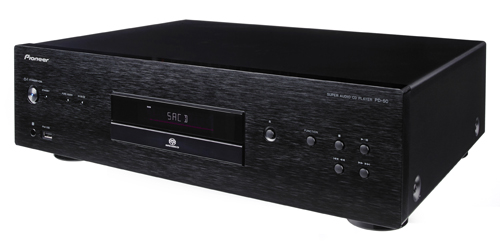
Pioneer PD-50: verdict
So, should you buy the Pioneer? Well, there aren’t many SACD players available for this sort of money, so it’s worth considering if you’re an enthusiast. The digital inputs mean it can also double-up as a bridge between a streamer or iOS device and an analogue amp.
But while it sounds clean and rhythmic it lacks the dynamics of the best in class, and that’s a flaw that can’t be ignored.
See all our CD player Best Buys
What Hi-Fi?, founded in 1976, is the world's leading independent guide to buying and owning hi-fi and home entertainment products. Our comprehensive tests help you buy the very best for your money, with our advice sections giving you step-by-step information on how to get even more from your music and movies. Everything is tested by our dedicated team of in-house reviewers in our custom-built test rooms in London, Reading and Bath. Our coveted five-star rating and Awards are recognised all over the world as the ultimate seal of approval, so you can buy with absolute confidence.


